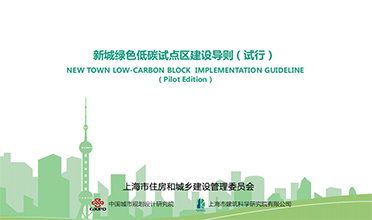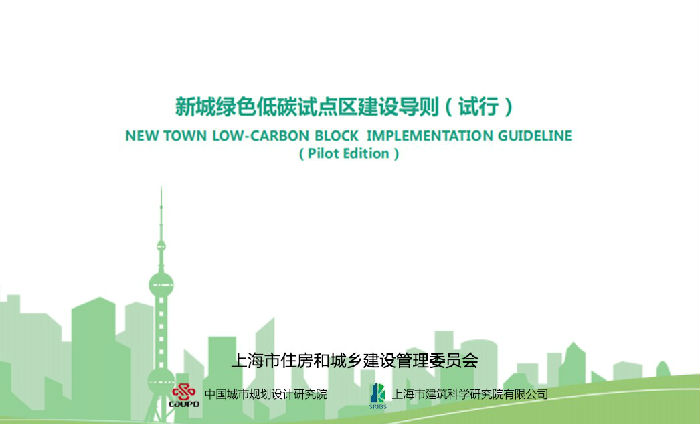



2 Efficient and reliable energy utilization
2.1 Overall requirements
The guidelines propose that the large-scale application of renewable energy should be vigorously promoted. By promoting solar water heating system, building photovoltaic integration system and shallow geothermal energy utilization in accordance with local conditions, the renewable energy penetration rate of the project will be improved. Improve the utilization efficiency of regional energy systems by adopting high efficiency distributed energy systems. According to the project's local energy situation, building use and function, construction progress, use requirements and other factors, the conditions for the use of district cooling and heating systems, to encourage the installation of distributed energy centers. By exploring green low-carbon clean energy micro-grid system, piloting the implementation of waste heat and waste heat utilization technology, and exploring the application of green hydrogen energy system, we promote the maximum utilization of distributed energy and diversified energy supply. Realize sub-metering of energy and monitoring of greenhouse gas emissions by exploring the energy wisdom control system.
2.2 Renewable energy systems for integrated applications
1) Promote the large-scale use of renewable energy
Regional building renewable energy penetration should be improved through a series of measures, including surveying, and assessing the distribution of renewable energy, the amount available, and its rational use. Each new building needs to adopt one or more renewable energy sources such as solar photovoltaic, solar thermal, and shallow geothermal energy.
2) Promote solar water heating systems
Solar water heating systems should be widely promoted in buildings with domestic hot water needs, while ensuring that the installation of solar water heating systems do not affect the function of the building and harmonize with the appearance of the building. For the installation of solar energy systems, its heat collection efficiency should be no less than 42%, solar energy guarantee rate should be no less than 40%.
3) Promote the high level development and utilization of building photovoltaic
The design strategy of new construction projects should be based on the basic conditions of the roof and vertical fa?ade, using appropriate measures to actively promote the application of distributed photovoltaic scale. The proportion of new state offices, schools, hospitals, industrial plants and other building roofs with installed photovoltaic power generation should be no less than 50%, the proportion of new commercial, office and residential building roofs with installed photovoltaic power generation should be no less than 30%.
4) Promote the utilization of shallow geothermal energy
The construction strategy should be based on the resource endowment of shallow geothermal energy of the project to make reasonable and scientific use of shallow geothermal energy. At the same time, the design, construction, supervision, and acceptance of the underground heat exchange system in the development and utilization of shallow geothermal energy should comply with the relevant national and Shanghai standards, norms and technical regulations.
2.3 Efficient and suitable distributed energy system
1) Adoption of district cooling and heating system
The new city design action should be based on energy safety, energy conservation, environmental protection and other policies, and fully consider the impact of local energy conditions, building use and function, construction progress, use requirements and other factors, and determine the pilot area energy program through economic and technical comparison. At the same time, the design strategy should determine the simultaneous use coefficient of the district cooling and heating system based on the capacity of the cooling and heating source devices, the diameter of the transmission and distribution network, the selection of end devices and the operation strategy, and the measurement of cooling and heating costs.
2) Adopt distributed energy supply system
When the power load, heat load and cooling load of buildings in the region match each other, the guidelines encourage the use of distributed energy supply systems and the reasonable setting of distributed energy centers. The distributed energy supply system can be a composite energy source combined by multiple energy forms, such as natural gas distributed energy, ice storage and cooling, ground source heat pump systems and fuel cells, etc., and managed through a multi-energy complementary Internet to improve the stability and reliability of the regional energy supply system.
2.4 Low-carbon clean energy micro-grid system
1) Pilot implementation of waste heat utilization technology
The guidelines encourage the use of waste heat to improve the efficiency of energy use. Specific measures include promoting the resource utilization of industrial waste heat, waste heat utilization of garbage incineration power generation, encouraging buildings to use centralized heat and heat networks, heat pumps, air conditioning waste heat and other energy-saving methods to achieve green low-carbon circular development.
2) Explore the application of green hydrogen energy system
The guideline advocates exploring the development of green hydrogen energy system, promoting the replacement of hydrogen fuel cell vehicles and the reasonable layout of hydrogen refueling stations. It proposes to explore green hydrogen energy engineering demonstration by exploring renewable energy electrolytic water hydrogen production and biomass hydrogen production.
3) Promote smart energy micro-grid system
The guidelines propose the layout of an energy wisdom control system and the construction of an intelligent micro-grid system based on the building energy consumption monitoring system. The system should have functions such as building energy consumption monitoring, substation monitoring and management, distributed power supply monitoring and management, integrated energy station access management, microgrid operation management and charging pile supervision, energy consumption quota management, energy consumption diagnosis and audit, carbon emission management and comprehensive visualization, to comprehensively improve energy system supervision efficiency.
Source: <https://zjw.sh.gov.cn/jsgl/20220301/4f85d9ad98954bee9004a0d6d529f086.html>
Edited and translated by Hou Ying